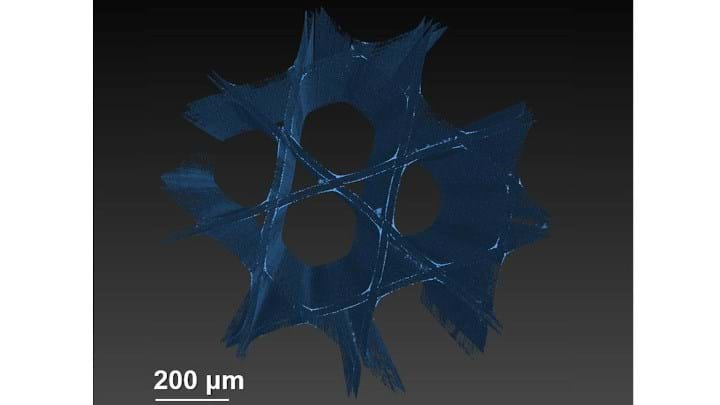Photocatalytic microreactors for ‘green’ hydrogen
RESEACHERS at the University of Southampton, UK have developed photocatalytic microreactors that convert water into hydrogen fuel using solar energy.
The photocatalytic microreactors were made using microstructured optical fibre canes (MOFCs). Microstructured optical fibres are optical fibre waveguides, made for global telecommunications. Waveguides are structures which enable the transmission of waves with minimal energy loss by restricting transmission in one direction, and optical fibres serve as waveguides for light. The researchers at Southampton repurposed this technology to produce microstructured optical photoreactors.

To enable hydrogen production, the researchers employed a palladium/titanium dioxide catalyst. Titanium dioxide (TiO2) is often used in this field due to its availability, low cost, and high activity. MOFCs were coated internally and externally using a suspension of TiO2 nanopowder in water, and then palladium (Pd) nanoparticle deposited onto the fibre.
The MOFCs were developed as high-pressure microfluidic reactors, each housing multiple capillaries that pass a chemical reaction along the length of the cane. They simultaneously serve as both host and catalyst for continuous, indirect water-splitting, in which methanol serves as a ‘sacrificial’ reagent.
Matthew Potter, Chemistry Research Fellow at Southampton, explained that Pd helps to split methanol (CH3OH) into carbon monoxide (CO) and hydrogen (H2). Photons absorbed by TiO2 briefly reduce the titanium (ie cause the gain of an electron) which then either removes the CO from the Pd site, refreshing it, or converts water into H2.
Despite the low loading of the MOFC systems (<0.1 wt%), the researchers achieved hydrogen production efficiency of 70.4 mL/h/g of catalyst. This surpasses analogous liquid-phase powdered systems (14 mL/h/g of catalyst) by a factor of five.
H2 and carbon dioxide (CO2), the products of the reaction, are generated with a 3:1 stoichiometric ratio. According to researchers, this improves upon conventional hydrogen production methods. For example, a 2014 assessment of steam methane reforming – the main hydrogen production technology used by industry – suggested that for every kilogram of H2 produced, 7 kg of CO2 is produced.
According to the researchers, the system offers scope for optimising the photocatalytic performance of the coated MOFCs towards a variety of processes. Alongside hydrogen production, they are also investigating photochemical conversion of CO2 into synthetic fuel.
Potter said that further development of this technology requires expanded testing, and scaleup into pilot process to confirm the lifetime of the catalyst inside the MOFC. According to Pier Sazio, Principal Research Fellow in Photonics at Southampton, the microfluidic reactors are highly scalable and can be manufactured to any length, allowing for highly desirable chemical engineering scaleup and scaleout. Sazio explained that scaleout would involve the addition of more MOFCs in parallel to spread out load.
Currently, the researchers are expanding the technology to incorporate a wider range of materials within the optical fibres for other photocatalytic applications.
Potter commented: “In this work our …photoreactor shows significant improvements in activity compared to existing systems. This is an ideal example of chemical engineering for a 21st century green technology.”
ACS Photonics: http://doi.org/ds6z
Recent Editions
Catch up on the latest news, views and jobs from The Chemical Engineer. Below are the four latest issues. View a wider selection of the archive from within the Magazine section of this site.




